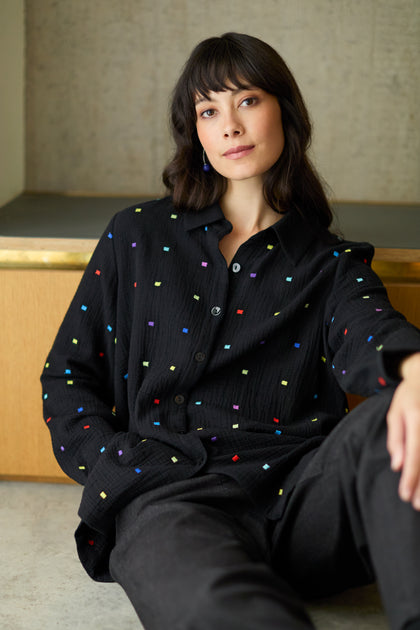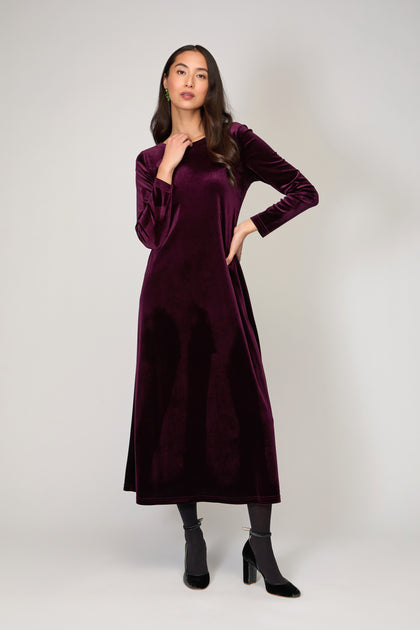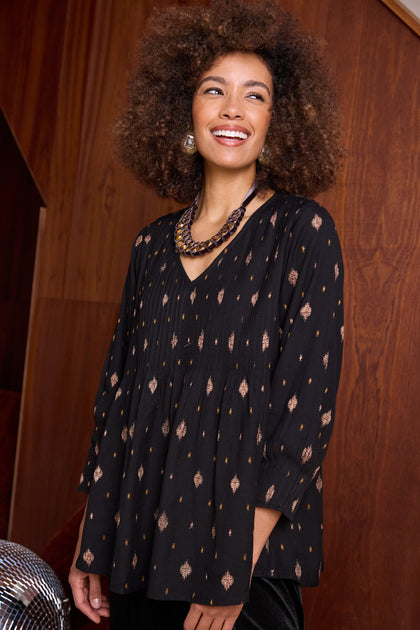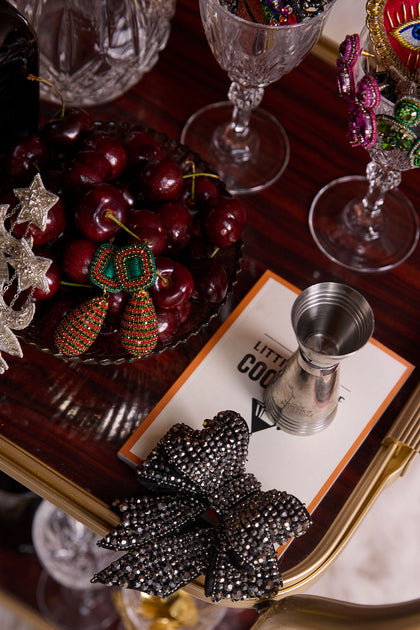Style & Life
Menopause & the Art of Eating Well
Article By Sahara .
Oct 30, 2025
Karen Newby shares how mindful cooking can transform this life stage
Midlife asks us to listen. To the rhythms of our bodies, to the changes that come with time, and to the kind of nourishment that begins from within. In The Natural Menopause Method Cookbook, nutritional therapist Karen Newby invites us to see cooking not as a duty, but as care. Her work explores how simple, nutrient-rich food can restore balance through the shifting rhythms of menopause and beyond.
We spoke with Karen about the connection between food, mood, and midlife, and how small changes at the table can become profound acts of self-compassion. Her words are calm and grounded, drawing from both modern nutritional science and ancient traditions that view food as medicine.
Within the pages of her book, symptoms become signposts: feeling anxious, sleepless or simply out of sorts can guide you towards what your body needs most. The result is a collection of recipes that feel both comforting and transformative. In this feature, we share a glimpse into Karen’s philosophy, along with two recipes from the book to try at home: roasted squash and feta with almond pesto and lemon chicken tagine. Each one is a small act of nourishment, a way to care for body and mind through the rhythm of cooking and the pleasure of eating.
You describe food as “self-love” in the book, drawing on the Korean concept of son mat. How do you think reconnecting with this kind of mindful cooking could change the way women experience midlife?
For me, cooking is about self-love and self-care. I think it is the bedrock of self-care when it comes to menopause. Women need to allow themselves the time to nourish within their busy days, and I believe that connection to cooking and nourishment can help us become more mindful of that process.

Your approach ties mood and emotion so beautifully to food, from “lonely mouth” moments to feeling “overwhelmed and anxious.” How can women begin to recognise these emotional cues and turn mealtimes into a form of daily care rather than another task?
There are so many different recipes for breakfasts in my book because I’m a big believer that if we fuel ourselves properly at the start of the day, we’ll feel more in control of what we eat and have more energy and focus. So many of us don’t fuel ourselves well in the morning, which leads to reactionary food choices later in the day. A good breakfast creates a subtle ripple effect that supports better choices and steadier energy.
The book is structured around symptoms such as “I feel hot,” “I feel exhausted,” and “I feel forgetful.” What inspired you to take that approach, and did it change how you think about the connection between body and food?
I’m a nutritional therapist, and for me, food is therapy. That’s why I wanted the book to be structured this way, so that women could see how food can directly influence their symptoms. It’s about understanding ingredients and how to use them to support the body. I’ve seen it work in my clinic for over fifteen years, and I wanted to create a recipe book that goes deeper than a list of what to eat at menopause. It’s about putting ourselves first and making food choices based on how we feel.
You’ve spoken about the “motherload” many women carry during perimenopause, including parenting, work, and caring for others. How can food realistically support women when time and energy are in short supply?
Motherhood often teaches us to put ourselves at the bottom of the list, and that habit carries on. Many women going through perimenopause are still caring for children or teenagers, so time is scarce. The food in my cookbook is designed to help both us and our families. I didn’t want it to mean cooking two different meals.
Time is one of the biggest barriers to cooking, but we often have more of it than we think. One percent of your day is fifteen minutes for breakfast, two percent is thirty minutes for lunch, and three percent is forty-five minutes for dinner. When we realise that, it becomes easier to make the time. Once we start eating nourishing food, our bodies respond, and we begin to crave it. That’s when the habit becomes a joy rather than a task.

The idea of “cooling and heating” foods from Traditional Chinese Medicine appears throughout your recipes. What have you learned from blending ancient food wisdom with modern nutritional science?
We have forgotten so much of our ancient rituals. While modern medicine is extraordinary, there is still much to learn from Traditional Chinese and Ayurvedic medicine. These systems have existed for thousands of years and speak a lot of sense.
Modern science is now catching up with many of their principles. For example, turmeric’s anti-inflammatory properties are now well-documented, and green tea’s L-theanine is recognised for its calming effects. My book is rooted in nutritional science, but I’ve layered in these ancient perspectives because they add depth and understanding to the idea of food as medicine.

In your acknowledgements, you write about cooking alongside friends and the women who helped shape this book. How important is community to our wellbeing at this stage of life, and how does that sense of togetherness show up in the way we cook and eat?
It’s hugely important. Where would we be without our community of girlfriends? Our friendships are one of the greatest gifts of this stage of life. Food is about love, community and connection. The kitchen is always the heart of the home, and I think returning to cooking can be grounding and even relaxing. The more we do it, the more we feel the benefits, not just physically but emotionally too.
There is a lot of joy in the way you write about food, even as you discuss serious topics like inflammation or hormone balance. Was it important to you that the book felt pleasurable rather than prescriptive?
I’m glad you felt that. Yes, I never want to tell people what to do. I see myself as a guide, offering what might help. I want women to rediscover the joy in food and in cooking. We spend so much time worrying about what we should or shouldn’t eat. There’s often guilt attached to it. This book is about celebration and nourishment, not rules or restriction. I want food to feel joyful again.

You lived in Asia for a time, and your recipes draw from global traditions such as miso, turmeric, and tahini. Which culinary influences most changed how you think about menopause and nourishment?
In Vietnam and China, people eat the same kinds of food for breakfast, lunch and dinner. There’s no ultra-processed cereal culture; instead, they eat nourishing meals like noodles or congee. One of the biggest lessons I took from these cultures is the use of soya.
In China, only about twenty-two percent of women experience hot flushes, compared to over seventy percent in the UK. That difference is thought to be linked to dietary phytoestrogens, found in foods like tofu, tempeh, miso and edamame. That’s why my book features many North Asian-inspired recipes. They incorporate these ingredients naturally and deliciously, supporting hormonal balance in a simple, everyday way.

You mention being a “pudding child,” yet the book skips desserts in favour of nutrient-rich meals. What has your own relationship with sweetness taught you about balance and satisfaction?
I am definitely a pudding child and I still enjoy dessert, but I chose not to include them in this book. I wanted the focus to be on fuelling ourselves with nutrient-rich meals. When our time is limited, it makes sense to dedicate it to food that truly supports our wellbeing.
That said, I always have a few squares of dark chocolate in the evening. I love to finish a meal with something sweet. It’s about moderation and joy. My mother has always been a wonderful baker, and those memories of homemade cakes and shortbreads are full of love. This book simply shifts the focus to savoury, nourishing food because that’s where we can make the biggest difference to how we feel.
If you could tell women one simple truth about menopause that you wish everyone knew, something food has helped you understand, what would it be?
Menopause is a time of change, and we need to work with our bodies rather than against them. Listening and responding with kindness is transformative. It’s a time to give ourselves grace and perhaps to love our bodies for the first time in our lives.
Karen’s approach is a reminder that eating well need not be complicated. Her dishes are practical yet generous, rooted in everyday ingredients and the belief that joy can be found in even the simplest meal. As she says, “Food is about self-love.”
The Natural Menopause Method Cookbook feels like an offering to all women who are ready to reclaim that love. It speaks to the beauty of slowing down, of listening to your body, and of finding pleasure again in what sustains you.
Karen Newby’s The Natural Menopause Method Cookbook (Pavilion Books), is out now.





